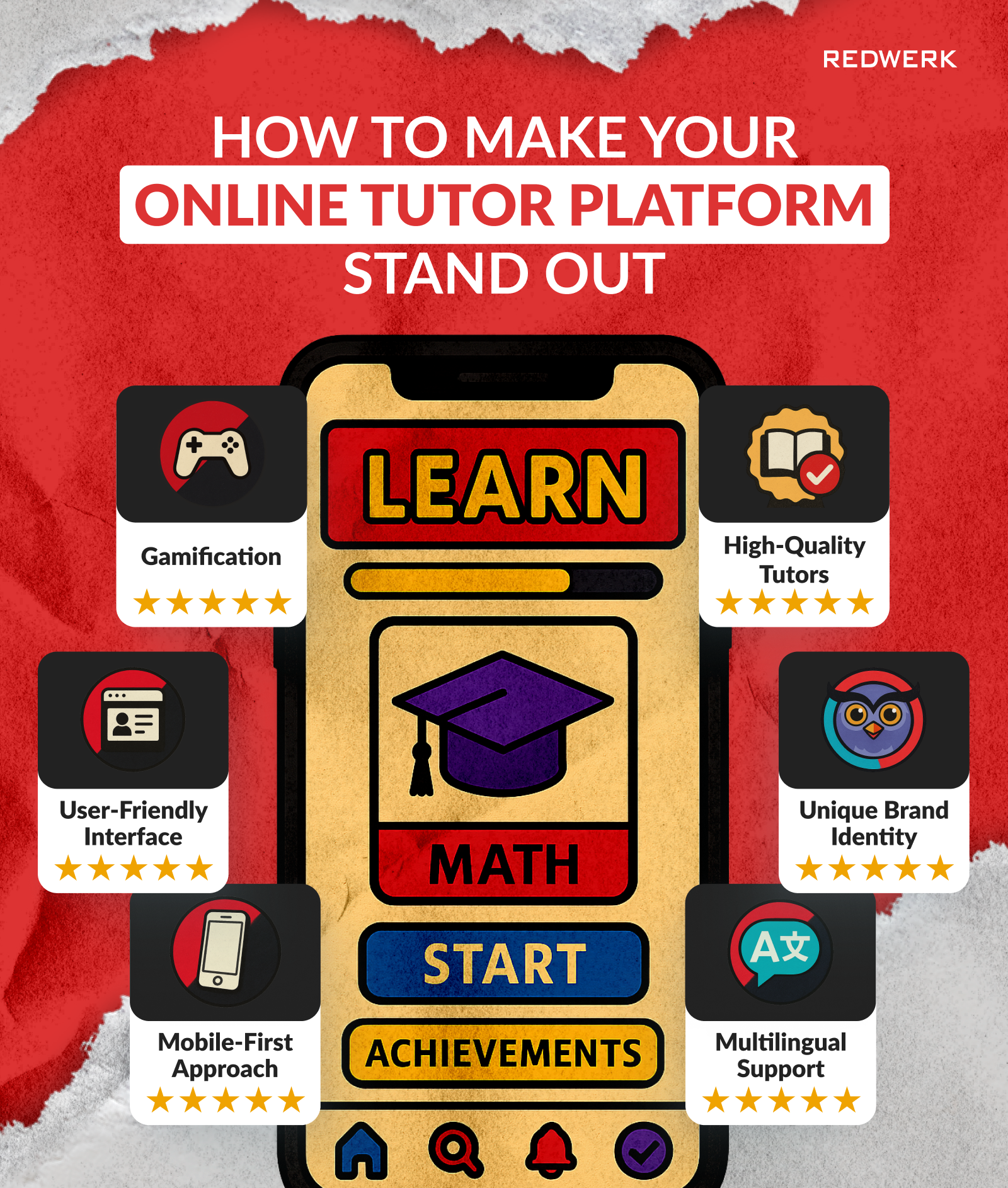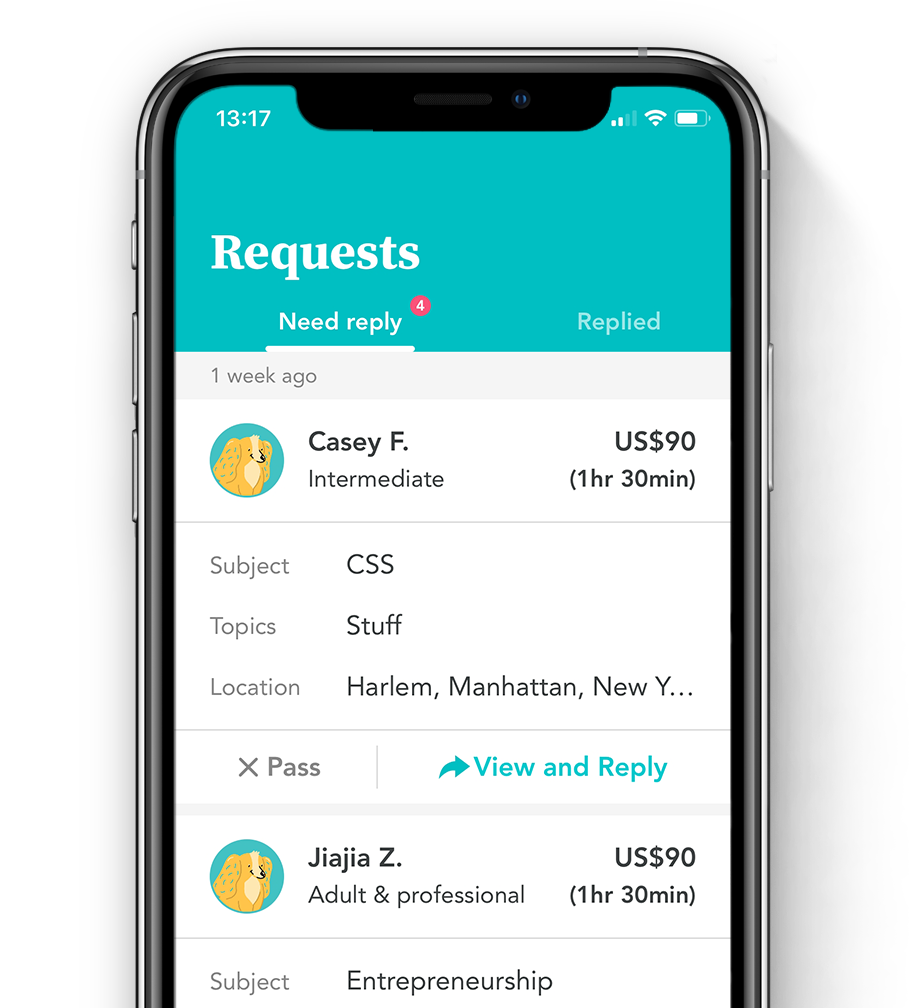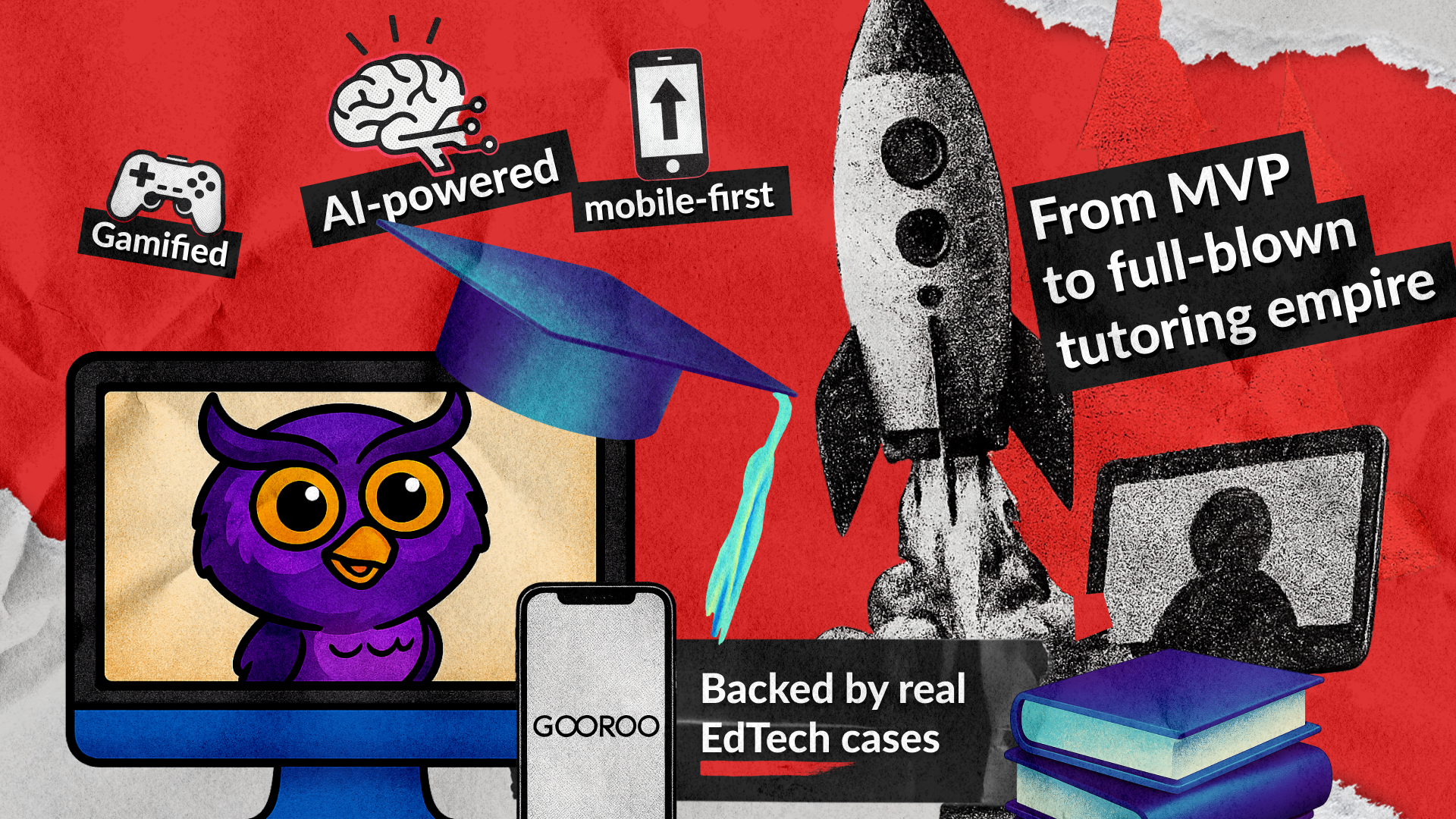Building an online tutoring platform is a promising and dynamic venture that offers distinct advantages to students, tutors, and entrepreneurs. Students gain access to personalized learning and flexible scheduling, tutors can expand their reach and share their expertise, and entrepreneurs get to tap into scalable revenue opportunities.
Have you ever considered launching your own online tutoring platform? In this article, we’ll cover the essentials of online tutor platform development so you know how to kick-start and excel in the digital education market. Let’s dive right in!
Why Build An Online Tutoring Platform in 2025?
Throughout recent years, online education has redefined learning. With digital tools and virtual classrooms gaining traction, tutoring platforms have become essential for personalized education, driving demand for e-learning development services
The global online tutoring services market is projected to experience a growth of approximately 15.6% during the forecast period spanning from 2023 to 2030. This market growth will be driven by the demand for accessible, flexible education, as say the researchers from Einpresswire. North America dominated the online tutoring market in 2024 with a market share exceeding 44.2%, and this impactful trend is expected to continue.
Aside from steady market growth, there are many other compelling reasons that prove developing a tutoring marketplace is a lucrative endeavor:
Niche Specialization: Instead of trying to compete with large, established platforms, focusing on a specific niche can be a successful strategy. Think of STEM tutoring, language learning with a focus on specific dialects, or test preparation for specialized exams.
Innovative Features: Integrating cutting-edge technologies like AI-powered personalized learning, VR/AR immersive learning experiences, and advanced analytics can differentiate a new platform.
Geographic Focus: Consider focusing on countries where access to traditional tutoring is limited or where there’s a strong emphasis on academic achievement.
How to Build a Tutoring Platform: The Business Side
Building a robust online tutoring platform starts with a well-thought-out business strategy. In our approach to building a successful tutor marketplace, we draw on extensive experience in delivering scalable digital solutions. For instance, our work on the Gooroo mobile app for tutors exemplifies how we integrate seamless functionality with intuitive design to create engaging user experiences.
We also helped AWE Learning move their educational platform to the cloud and implement critical SaaS features—reporting, role-based access, and subscription/content management. This included a UX/UI redesign, as well as significant improvements to platform stability and user engagement. See how we made it happen in our AWE Learning case study.
This proven methodology informs every aspect of our process, ensuring that whether you’re implementing advanced scheduling features or integrating secure payment gateways, your platform stands on a foundation of technical excellence and thoughtful user experience.
Market Research and Niche Selection
Before diving into development, conduct detailed market research to understand the competitive landscape and pinpoint unmet needs. Begin by asking:
- How does one start a tutoring business online?
- How does one create a tutoring website that stands out?
Perform surveys, analyze industry reports, and leverage data from sources like the National Center for Education Statistics to assess trends and demand in specific subjects or age groups. Identify niche markets such as test preparation, language learning, tutoring for specific learning disabilities, or specialized subjects that traditional educational institutions might overlook.
A thorough analysis should cover:
- Target Demographics: Define your primary audience (e.g., K-12 students, college students, working professionals).
- Geographical Scope: Decide whether to target local markets or operate globally.
- Competitive Analysis: Evaluate what established platforms are offering and where gaps exist.
- User Behavior: Understand how potential users search for tutoring services and what features they value most.

Choosing a Business Model
The business model you select will impact both your revenue streams and the technical architecture of your platform. Consider the following models:
Subscription Model
Users pay a recurring fee (monthly or annually) for access to a library of tutors and learning materials. This model supports steady revenue and encourages long-term engagement.
Commission-Based Marketplace
Act as an intermediary between tutors and learners, charging a commission on each tutoring session. This approach aligns your revenue with the success of the tutors on your platform.
Freemium Model
Offer basic access for free while providing premium content or additional features for a fee. This model attracts a broad user base while monetizing value-added services.
Pay-Per-Session Model
Charge users for each tutoring session. This option works well for users seeking occasional help rather than continuous learning.
When selecting a model, assess the scalability of each approach, the market’s willingness to pay, and the operational challenges you may face. A well-defined business model not only clarifies revenue generation but also guides the development of specific features and integrations.
Monetization Strategies and Strategic Partnerships
Your monetization strategy should complement your chosen business model. Key strategies include:
- Dynamic Pricing: Adapt session fees based on peak times, tutor expertise, or subject demand.
- Package Deals: Offer bundled sessions at discounted rates to encourage repeat usage.
- Affiliate Marketing: Collaborate with educational publishers or e-learning platforms to offer additional resources.
- Ad-Supported Content: Integrate unobtrusive advertising if you opt for a freemium model.
Strategic partnerships also play a crucial role. Collaborate with educational institutions, accreditation bodies, or industry influencers to boost credibility and expand your reach. Establish relationships with video conferencing providers and scheduling software vendors to enhance the user experience and streamline operations.
At Redwerk, we’ve got solid experience building ADA-compliant platforms. We honed these skills during our involvement on the Current project, an e-government solution used by public service agencies across the US.
How to Build a Tutoring Platform: The Tech Side
A reliable technical foundation is the backbone of any successful online tutoring platform. The development process should focus on creating a system that is scalable, secure, and user-friendly. By leveraging the right technologies and integrations, you can ensure seamless performance and long-term platform stability.
System Architecture and Scalability
When planning the system architecture, keep in mind that your platform must accommodate fluctuations in user activity, especially during peak tutoring hours. Consider these technical aspects:
- Cloud Infrastructure: Utilize cloud services from reputable providers to enable on-demand scalability and ensure high availability.
- Microservices Architecture: Break down the platform into independent services (e.g., user management, payment processing, video streaming) to facilitate easier updates and maintenance.
- Data Management: Choose robust databases and caching strategies to handle user data, session histories, and real-time interactions.
A scalable system design is essential for maintaining performance during growth. Cloud-based infrastructures, for instance, allow you to adjust resources dynamically as user numbers surge—similar to trends observed in other on-demand service sectors.
Key Features and Integrations
An effective online tutoring platform integrates several core features that create a seamless learning experience.Before listing features, it’s important to understand that these functionalities must work together to enhance both the tutor and learner experiences. Essential components can include:
- User Registration and Profile Management: Enable seamless sign-ups, detailed profiles, and credential verification for both tutors and students. This foundation builds trust and facilitates personalized experiences.
- Scheduling and Booking System: Integrate a dynamic calendar system that allows users to book sessions, set reminders, and manage rescheduling. Consider incorporating third-party scheduling APIs to optimize functionality.
- Video Conferencing Integration: Incorporate secure, high-quality video conferencing solutions to enable real-time interaction. Options such as WebRTC or integration with platforms like Zoom ensure smooth communication.
- Payment Gateway Integration: Implement robust payment processing that supports multiple payment methods and currencies. Prioritize secure transactions to build trust and simplify the monetization process.
- Messaging and Notification Systems: Offer in-app messaging, email alerts, and push notifications to keep users informed about session updates, promotions, and platform news.
- Analytics Dashboard: Provide both tutors and administrators with insights into session performance, user engagement, and revenue trends. Data-driven decisions help refine the platform and improve user satisfaction.
- Interactive Whiteboard: Enhance engagement with real-time digital whiteboards that allow both tutors and students to draw, annotate, and share diagrams. Tools like Miro or OpenBoard can be integrated for an interactive learning experience.
- AI-Assisted Learning: Harness advanced machine learning to deliver personalized insights and adaptive learning recommendations for both tutors and administrators. This feature analyzes session performance, engagement patterns, and individual progress to offer targeted feedback and optimize instructional strategies.
Security, Accessibility, and Compliance
Protecting user data and ensuring a seamless experience for all users are both non-negotiable priorities. Key measures include the following:
- Data Encryption: Use end-to-end encryption for all sensitive information. This ensures that personal data, session recordings, and payment details remain secure.
- Regulatory Compliance: Adhere to data protection laws such as GDPR and, where applicable, FERPA in the United States. Regular audits and compliance checks help safeguard against legal issues.
- Accessibility Standards: An accessible platform is not only ethically responsible but also expands your market reach. Implement Web Content Accessibility Guidelines (WCAG) and test your platform rigorously.
- User Privacy: Clearly communicate your privacy policy and obtain user consent for data collection. Transparent data practices foster trust and long-term engagement.
By focusing on these technical components, you’ll build a secure, resilient, and user-friendly tutoring platform that can adapt to evolving market needs.
Estimated Development Timeline and Cost Factors
Understanding the cost and timeline of your project is crucial. The final estimate depends on factors such as feature complexity, integration needs, and desired scalability. Below is a rough breakdown of man-hours for typical tasks when building an online tutoring platform:
Development
1060
1610
Server Setup
50
70
App Core Architecture
40
60
CI/CD Pipelines
30
45
Database Setup
30
45
User Roles Management
20
30
API Development
50
70
Push Notifications System
20
30
Authorization & Security
30
50
Student App
380
600
Registration/Login
12
18
User Profile Management
16
28
Course Categories
20
30
Course Listings
24
36
Search & Filters
16
24
Tutor Profile View
16
24
In-App Chat & Messaging
20
32
Video Streaming Integration
40
60
Scheduling Sessions
24
36
Booking & Payment Integration
32
48
Push Notifications
12
24
Ratings & Reviews
16
24
Course History
12
20
Favorites & Saved Items
8
12
Customer Support
8
12
Promotions & Discounts
8
12
Analytics Integration
12
24
Privacy & Terms Pages
2
4
Settings & Preferences
16
26
Localization & Multilingual Support
24
36
Tutor App
154
228
Registration/Login
12
18
Profile Management
16
24
Course Management
20
32
Session Scheduling
20
30
Live Video Session Management
20
30
Earnings Tracking
16
24
Notifications & Reminders
10
18
Student Interaction Tools
16
24
Feedback & Rating System
8
12
Support & FAQs
8
12
Cashout/Payments
8
12
Web Admin Dashboard
286
432
Environment Setup
20
30
Admin Authentication
8
12
User Management (Students/Tutors)
24
36
Course Management
24
36
Session & Booking Management
20
32
Content Management
20
32
Payments & Transactions
24
36
Revenue & Commission Management
20
32
Notifications & Messaging
16
24
Reporting & Analytics
30
48
Automatic Payments Setup
20
30
Security & Compliance
24
36
Overheads
528
950
Mobile App Design
120
220
Web Dashboard Design
80
120
Project Coordination
100
220
Internal Communication
60
120
Functional Testing
80
120
Compatibility Testing
40
70
Performance & Security Testing
48
80
Total Estimate
1956 hrs
3170 hrs
These estimates provide a guideline for planning your budget and timeline. Note that integrating additional features—such as advanced analytics or custom reporting—may affect both the cost and expected development time.
If you’re considering a native mobile solution and you’d like to compare iOS app vs. Android app development costs, make sure to also check out our iOS app development cost breakdown.
When budgeting your project, consider:
- Feature Prioritization: Start with a minimum viable product (MVP) that covers core functionalities, then iterate based on user feedback.
- Third-Party Integrations: Each integration (e.g., video conferencing, payment gateways) adds complexity, but also value.
- Long-Term Maintenance: Allocate resources for ongoing support and updates to keep the platform competitive.
Summing Up
Building an online tutoring platform requires a balance of solid business strategy and robust technical execution. By conducting thorough market research, choosing the right business model, and implementing both scalable and secure technology, you can create a platform that confidently meets educational needs while also driving business success.
At Redwerk, our extensive experience in both web and mobile development ensures that we deliver solutions that truly empower our clients. At Redwerk, we specialize in building high-quality, scalable software solutions tailored to your business needs. Get a free estimate for your project—no obligations, just expert guidance! Contact us here.
See how we helped Gooroo build an on-demand iOS app for tutors, with 90% of its reviews now hitting five-stars



